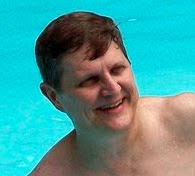My first reading of the book years ago was done without any perspective of its historical context in the ongoing voice of Western philosophy, and I had no background in the problem it proposed to solve. Notwithstanding my limited qualifications, it fascinated me. Being immersed at the time in the study of mathematics and engineering, I was impressed with its economy of expression and captivated by its confident tone. I alternately perceived the book as either extreme philosophy or extreme poetry.
As I have come to understand it, the aim of the book is to map the limits of what can be expressed in language. And in the most general sense this limit also defines the limit of our rational thought. Like Kant in his Critique of Pure Reason, who tried to establish the limits of reason in order to make room for faith, Wittgenstein tries to establish the line of demarcation past which science is no longer a valid tool. As he describes and analyzes the formal nature of propositions (language), Wittgenstein takes care to distinguish between what it makes sense to say and what, when said, is simply nonsense.
Consider the following passage:
“We feel that when all possible scientific questions have been answered, the problems of life remain completely untouched. Of course there are no questions left, and this itself is the answer.”
In this characteristic excerpt, Wittgenstein at once seemingly gives cause and justification for the existence of all religious thought and activity -- and then swiftly suggests that there may be no point in talking about it. But he goes on to say
“The solution to the problem of life is seen in the vanishing of the problem. (Is not this the reason why those who have found after a long period of doubt that the sense of life became clear to them have then been unable to say what constituted that sense?) There are indeed things that cannot be put in to words. They make themselves manifest. They are what is mystical.”
And so he says that there are indeed truths that are inexpressible in language.
As the book goes on, it builds progressively, statement by numbered statement, until in the final passages, we begin to experience the boundary to precise expression that Wittgenstein hoped to illuminate. His dramatic concluding statement, “What we cannot speak about we must pass over in silence” has the character of a final, extended chord, as in the Beatles’ song A Day in the Life.
Acknowledging that he himself, in the body of the book, had used language to express his point, he concedes just before the end:
“My propositions serve as elucidations in the following way: anyone who understands me eventually recognizes them as nonsensical, when he has used them - as steps - to climb up beyond them. (He must, so to speak, throw away the ladder after he has climbed up it.) He must transcend these propositions, and then he will see the world aright.”
These and other similar statements in the book are what motivate me to describe the work as poetry. It does not purport to be poetry, but its tautness and, in places, lyrical expression, give it the feel of poetry. And it possesses a “desert father”-like quality: it makes statements in the world, but tries to remain detached from it, referencing the mystical while acknowledging our limited expressive connection to it. I’m reminded of the work of T. S. Eliot, particularly in passages like the following from Eliot’s poem Burnt Norton:
“Words move, music moves
Only in time; but that which is only living
Can only die. Words, after speech, reach
Into the Silence.”
Only in time; but that which is only living
Can only die. Words, after speech, reach
Into the Silence.”
In all this, the crucial point for me is how we personally react to this understanding of the mystical, as Wittgenstein defines it. Do our religious ceremonies and gestures have purpose and meaning? Do our scriptures reveal truths, however poetically (unscientifically) they are expressed?
With this as a backdrop, let’s consider this passage from John’s Gospel:
"My kingdom is not of this world. If My kingdom were of this world, then My servants would be fighting so that I would not be handed over to the Jews; but as it is, My kingdom is not of this realm." John 18:36
Most of us would understand the distinction Jesus is making between an earthly kingdom and that of his Father’s heavenly kingdom. The language of the time used the word kingdom, but we could easily translate earthly kingdom in this context to mean the temporal world as we experience it. In a very simplistic sense we could say that the Bible throughout tries to draw us to an understanding of the existence of these two “kingdoms” and of the difference between them. And there is never a question as to which is the more to be desired.
But when involved in a discussion and challenged to explain and defend this belief, we are typically only allowed the tools of language and logic. And such tools are designed for the temporal realm, not the mystical. Thus, when engaged with the philosophically astute, we are prone to being tied in the circular knot of our own words. Or drawn into silence.
For myself, I often turn for help to the words from an early 20th century book on philosophy, one that might be considered an unlikely source.

No comments:
Post a Comment